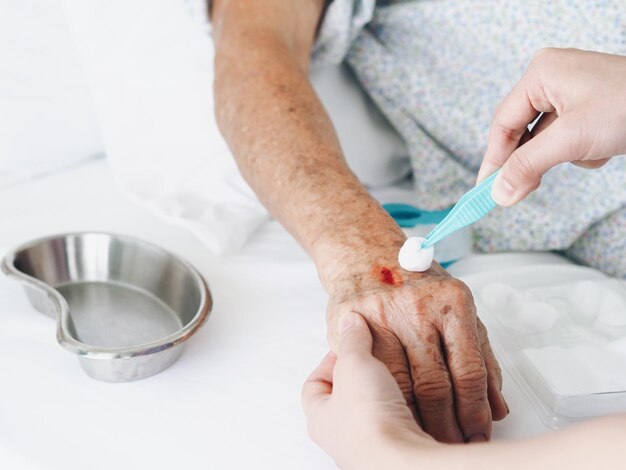Speeding Up Diabetic Wound Healing: Essential Tips and Resources
Have you ever wondered why diabetic wounds can be so stubbornly slow to heal? Diabetes can compromise your body's natural healing process, but with the right care and management, you can encourage faster recovery. Here’s how you can expedite the healing of a diabetic wound while also discovering supportive resources that extend beyond healthcare.
Prioritize Proper Wound Care
Ensuring optimal wound care is the foundation for faster healing. It's crucial to keep the wound clean and free from infection. Here are key steps to effective wound management:
Clean the Wound: Gently wash the wound with mild soap and water. Avoid using strong antiseptics that could irritate the skin.
Moisturize: Apply a thin layer of antibiotic ointment to keep the wound moist and promote healing.
Cover with a Sterile Dressing: Protect the wound from external contaminants by using a sterile bandage or dressing. Change the dressing regularly.
Monitor for Infection: Look out for signs of infection such as redness, swelling, pain, or unusual discharge, and seek medical attention if needed.
Maintain Optimal Blood Sugar Levels
Controlling blood glucose levels is vital for wound healing in diabetics. Elevated sugar levels can impair white blood cell function, delaying the healing process. Regular monitoring and medication adherence are key.
Follow a Balanced Diet: Focus on foods low in sugar and high in fiber, like whole grains, vegetables, and lean proteins.
Exercise Regularly: Physical activity can improve insulin sensitivity and glucose metabolism.
Consult Healthcare Professionals
Engaging with healthcare providers can offer invaluable insights into managing diabetes and wound care. Consider the following actions:
Regular Check-Ups: Schedule consistent visits with your doctor or endocrinologist to monitor your wound and overall health.
Specialist Consultations: Podiatrists and wound care specialists can provide targeted treatments and advice.
Innovative Treatments
Recent advancements have brought new options to the forefront of wound care:
Hyperbaric Oxygen Therapy (HBOT): This treatment increases oxygen supply to the tissue, promoting faster healing.
Topical Treatments and Dressings: Advanced therapies like growth factor gels and hydrocolloid dressings can enhance healing.
Negative Pressure Wound Therapy: Uses vacuum pressure to remove excess fluids and promotes healthy tissue growth.
By combining these medical and at-home strategies, the healing of diabetic wounds can be significantly expedited. However, financial constraints might hinder access to necessary treatments. Luckily, there are various resources available to provide support.
Accessing Financial and Educational Resources
While prioritizing health, you may also want to explore ways to ease the financial burden. Here are some resources and programs that could help you:
Medicare and Medicaid: Offers coverage for many medical necessities, including wound care supplies.
Supplemental Security Income (SSI): Provides financial assistance to individuals with disabilities, including severe diabetes-related conditions.
Educational Scholarships and Grants: Organizations often offer funding for courses or workshops on diabetes management.
Debt Relief Programs: These can provide relief if medical expenses have caused strain on your financial situation.
Non-Profit Organizations: Some non-profits focus on providing medical supplies or financial support to diabetics.
Implementing a combination of these steps and tapping into available resources will not only help diabetic wounds heal faster but also provide financial and educational support, empowering you to manage your condition more effectively.
🌟 Financial and Educational Assistance at a Glance 🌟
- 🏥 Medicare and Medicaid: Covers necessary medical needs, including wound care.
- 💸 SSI (Supplemental Security Income): Financial help for people with disabilities.
- 🎓 Educational Grants: Funding for diabetes management courses.
- 📉 Debt Relief Programs: Alleviating financial stress from medical bills.
- 🤝 Non-Profit Support: Organizations offering supplies or financial aid to diabetics.
Taking advantage of these resources can relieve some of the burdens, allowing you to focus on healing and maintaining health.
